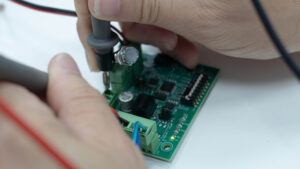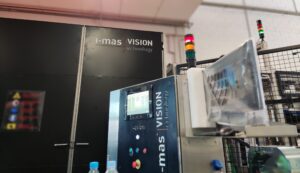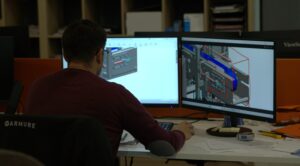Smart product design is transforming the industry. More and more product design companies are seeking to equip traditionally passive products with connectivity, measurement capabilities, or automatic response features. But designing a smart product involves integrating different disciplines: electronics, embedded software, and connectivity, without losing sight of mechanical design and user experience.
In this article, we explore the main challenges and recommendations when tackling product design and development that combines sensors, firmware, and connectivity from an industrial design perspective.
Product design with sensors: how to choose the right ones
Incorporating sensors into a product should not be an exercise in technological accumulation, but rather a decision based on the purpose of the design. Identifying which variables provide useful information—such as temperature, position, pressure, or vibration—allows us to build connected products that truly improve the user experience or decision-making.
Choosing the right sensor depends on the product’s operating environment, mounting conditions, required accuracy, and the type of data to be analyzed. When designing and developing a product, it is essential to consider the available space, power supply, and processing complexity from the outset. In addition, the sensor must be able to be integrated robustly without compromising the aesthetics or ergonomics of the product.
Firmware: the embedded brain of the smart product
Firmware is the software that runs on the microcontroller and manages the sensors, control logic, and communication. It often goes unnoticed, but it is one of the most critical parts of any smart product.
Some key recommendations:
- Define a modular architecture to facilitate updates.
- Document the code thoroughly and maintain version control.
- Include self-diagnostic routines and remote updates if feasible.
- Optimize consumption to extend battery life if the product is portable.
Collaboration between the software team and the mechanical product design team is essential from the outset. Not everything that can be programmed is feasible from a thermal or structural point of view.
Connectivity: from prototype to cloud
Once the product generates data, it must be transmitted. Choosing the right communication protocol and technology is crucial:
- WiFi or Ethernet: ideal if there is constant network access and high transmission speed is required.
- Bluetooth or BLE: for connection with mobile phones or other nearby devices.
- LoRa, Sigfox, or NB-IoT: for sending small amounts of data over long distances with low power consumption.
It is important to consider the product‘s life cycle and the ease of maintaining connectivity. A product without reliable network access ceases to be smart.
Prototyping and technological compatibility in industrial design
The design of smart products must consider much more than just the external form. From the casing to the assembly system, every design decision influences the functionality of the device. A well-designed prototype will facilitate the integration of sensors, the dissipation of heat generated by electronic components, and protection against interference.
The integration of sensors and connectivity modules must be anticipated from the CAD modeling stage. It is also important to plan the location of antennas, facilitate access to connectors or batteries, and incorporate passive ventilation systems if necessary. In addition, the design must reflect the functionality of the product, incorporating elements such as buttons, LED indicators, or screens in an intuitive and aesthetic manner.
Design and development of smart products at I-MAS
At I-MAS, we develop smart products by integrating sensors, microcontrollers, and connectivity from the earliest stages of product design and development. We combine expertise in electronic engineering with industrial design to achieve functional, robust, and viable solutions that are both technically and aesthetically sound.
One example of this is WiPass, a device developed by I-MAS that allows users to automatically connect to Wi-Fi simply by bringing their phone close to it. This product integrates battery-free hardware, custom firmware, and NFC connectivity, along with a remote management platform. It is a simple yet powerful solution that demonstrates how smart design can improve the user experience and digitize physical environments such as hotels, offices, and shops.
We have been helping startups and innovative companies to successfully launch products for more than 20 years. Are you looking for a product design and development company in Barcelona? Contact us today!



